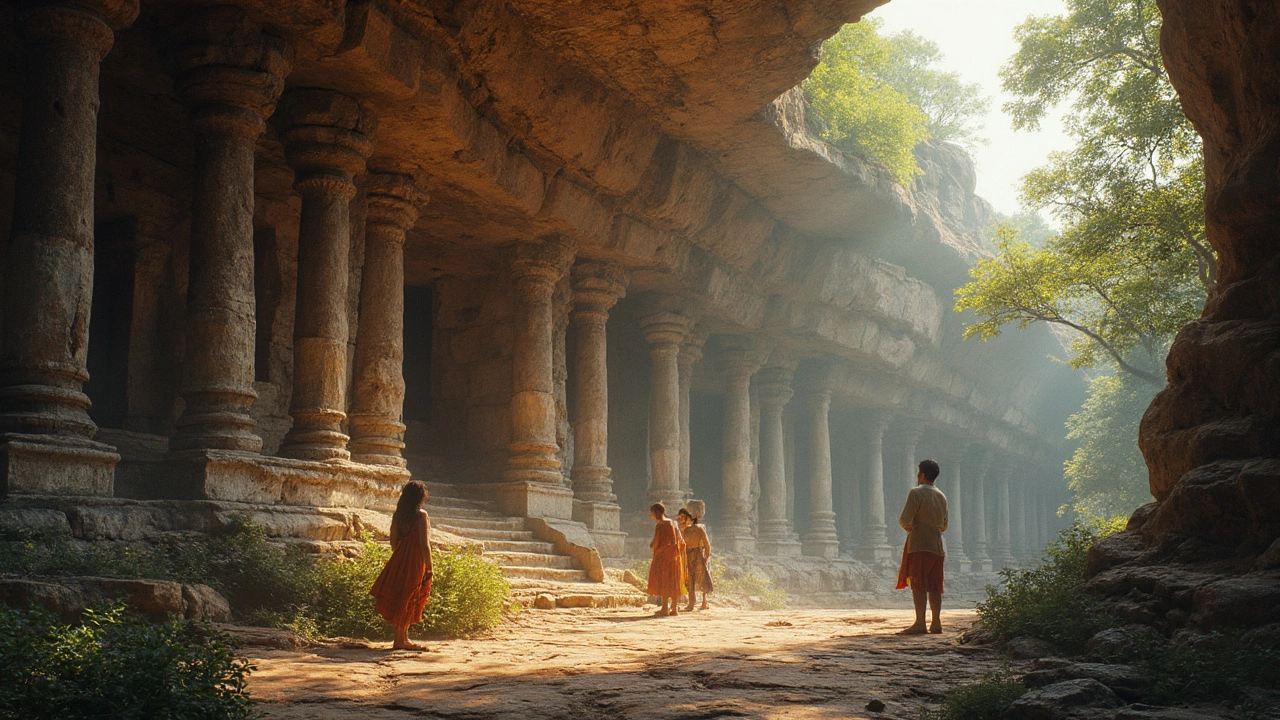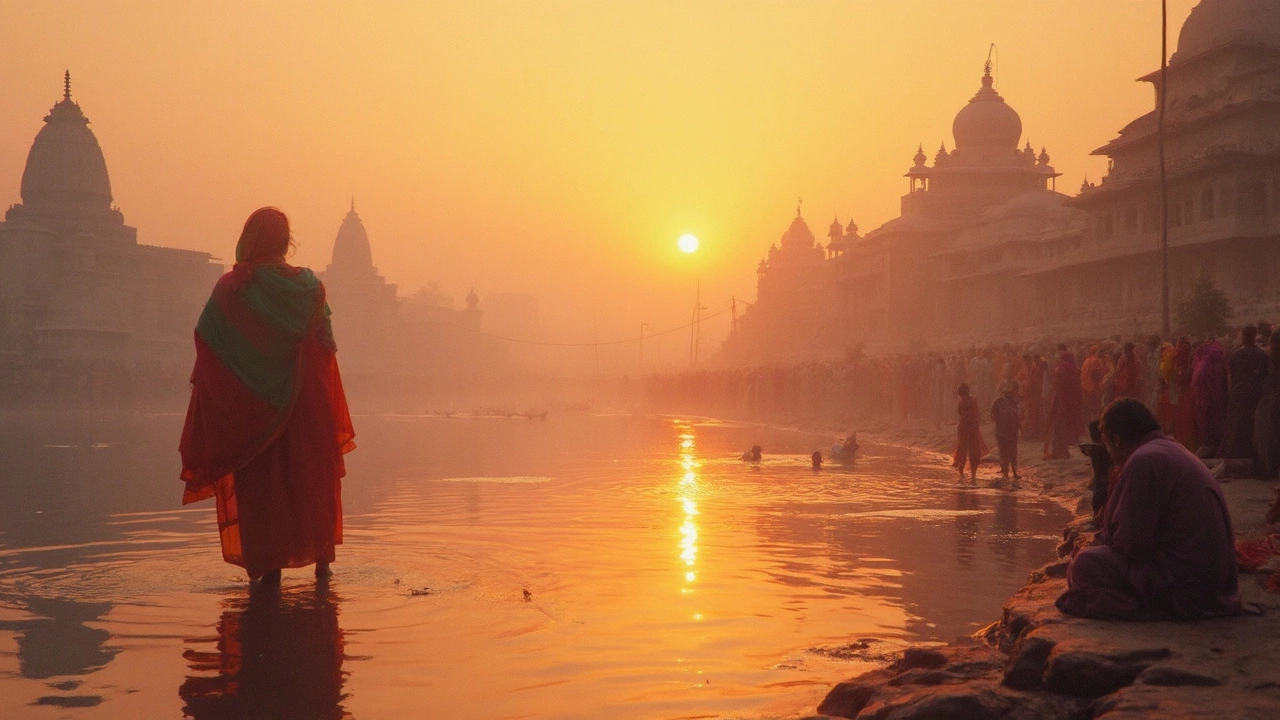India isn't just a country; it's like a living museum filled with some of the oldest heritage sites on the planet. Whether you're a history buff or just someone who likes a good story, India's heritage sites offer a peek into the amazing tapestry of its history. From stunning rock carvings to remnants of ancient cities, each site is a gateway to a different era.
Take, for instance, the Ajanta and Ellora Caves. These aren't just holes in rocks; they're stunning examples of ancient craftsmanship. Imagine walking through corridors that were crafted with precision around the 2nd century BCE. You've got these detailed murals and sculptures that tell stories of Buddha's life. It's like the Instagram of ancient times, capturing moments and messages in stone and paint.
And then there's Varanasi, perhaps the oldest city still buzzing with life. It's been around for thousands of years, and its ghats, those steps going down to the Ganges River, are sites of daily rituals and ceremonies that have remained unchanged for ages. It’s not just a place, but an experience that connects you with a deeply spiritual history.
- Ancient Marvels: Ajanta and Ellora Caves
- Varanasi: The Eternal City
- Mohenjo-Daro: Echoes of the Indus
- Hampi: The Ruins of a Glorious Empire
Ancient Marvels: Ajanta and Ellora Caves
Located in the state of Maharashtra, the Ajanta and Ellora Caves are like stepping back in time to an era where art and religion mingled seamlessly. They are pretty much the rock stars of India's ancient heritage sites—literally carved into the rock face itself. Both are UNESCO World Heritage Sites and are famed for their stunning rock-cut architecture and intricate sculptures that have stood the test of time.
The Ajanta Caves date back to around the 2nd century BCE and were developed over about 700 years. This site boasts about 30 caves that were used as a retreat by Buddhist monks. As you wander through, you'll be amazed by the vibrant murals depicting Jataka tales, which are stories about the previous lives of Buddha. It’s not just about the artistic flair, but there’s also this sense of tranquility and reverence that fills the air.
Then, not far away, you’ve got the Ellora Caves. Unlike the Buddhist focus of Ajanta, Ellora is an eclectic mix of Buddhist, Hindu, and Jain caves. Imagine walking through over 100 caves (though about 34 are open to the public), with the Kailasa temple being the crown jewel. This temple is an architectural marvel, dedicated to Lord Shiva, and is one of the largest monolithic structures in the world. The attention to detail and scale here is mind-blowing.
Visiting these sites is like taking part in a cultural feast, where you’re not only admiring ancient art but also connecting with stories and traditions from centuries ago. So, when you visit, make sure to have a good pair of shoes, as there’s a lot of ground to cover. And don't forget a camera—you’ll want plenty of memories of these incredible ancient structures.
Varanasi: The Eternal City
Welcome to Varanasi, often dubbed as the world's oldest, continuously inhabited city. This place isn't just a dot on the map; it is a living, breathing blend of life and death rituals, echoing through time. What's fascinating about Varanasi is how its streets and ghats are embedded with thousands of years of history.
You can't talk about heritage sites in India without mentioning Varanasi. This city is considered one of the seven sacred cities of Hinduism. Every corner here has a story, with the sacred Ganges River flowing right through it, adding that mystique. Hindus believe that dying here and being cremated along the Ganges allows one to break the cycle of reincarnation. Heavy stuff, right?
Let's take a walk down the ghats—these steps leading to the river are where Varanasi truly comes alive. It has around 88 ghats, each with its own historical and cultural significance. For example, Dashashwamedh Ghat is probably the most popular one, buzzing with devotees, rituals, and the famous Ganga Aarti, a fire pilgrimage performed every evening.
Now, what's a trip to Varanasi without visiting the Kashi Vishwanath Temple? Dedicated to Lord Shiva, it's an integral part of this city's identity, originally built in 1780. It not only holds spiritual value but also showcases intricate Hindu architecture that draws visitors from all over.
If you get a chance, hop on a boat ride at dawn. Seriously, seeing the sunrise over the Ganges as the city awakens is something you'll never forget. It's like stepping into an epic historical documentary, but you're living it. Plus, you might just get to see locals practicing yoga by the river—talk about keeping those ancient traditions alive.
Whether you're diving deep into spirituality or just soaking up the atmosphere, Varanasi is the kind of place that stays with you long after you've left. It's where time seems to stand still, and yet, life goes on, imbuing the city with a unique energy that's hard to find anywhere else.

Mohenjo-Daro: Echoes of the Indus
Diving into the mysteries of Mohenjo-Daro feels like traveling back to one of the world's earliest urban settlements. Situated in modern-day Pakistan, this ancient site was a bustling city of the Indus Valley Civilization, dating back to 2500 BCE. It's mind-blowing to think about how advanced these people were, considering they had pretty sophisticated city planning long before modern architects drew their first sketch.
The layout of Mohenjo-Daro showcases an incredible understanding of city infrastructure. The city was divided into a lower residential area and a citadel, which was kind of like a fortified area that housed important structures. These folks even had an elaborate drainage system, something that even some modern cities struggle with. Imagine, walking through streets lined with baked brick houses and seeing remnants of bathing facilities, demonstrating the emphasis on cleanliness and hygiene.
One of the most striking discoveries of Mohenjo-Daro is the 'Great Bath,' which is believed to be the oldest public water tank in the world. This massive structure might have been used for religious or ceremonial purposes. It’s like an ancient swimming pool, highlighting how water played a central role in their community life.
Unfortunately, much of Mohenjo-Daro is still shrouded in mystery. We don't know the language of the Indus people nor why their civilization suddenly declined. But the site remains a fascinating window into what life could have been like thousands of years ago—full of bustling markets, strong community ties, and maybe even some ancient gossip shared over those bathing rituals.
Curious minds can even check out artifacts in various museums, ranging from pottery to tools, giving glimpses into the daily life back then. Who knows, maybe the secret to their advanced urban lifestyle will unlock someday, adding more pieces to the puzzle of this ancient wonder.
Hampi: The Ruins of a Glorious Empire
Welcome to Hampi, a place that feels like stepping into a real-life history lesson. Once the booming capital of the Vijayanagara Empire, it's now a sprawling landscape of ancient stone structures that tell tales of its grand past. This UNESCO heritage site is in the state of Karnataka and offers a glimpse into a world that's a mix of mythology and historical wonder.
Imagine walking through over 1,600 ruins, ranging from forts, royal complexes, temples, and sculptures to incredible water works and ancient markets that hint at a once-thriving empire from the 14th to 16th century. Hampi is often called an open-air museum, and for a good reason. The Virupaksha Temple, which is still in use, dates back even further, to the 7th century, showcasing a continuity of devotion over millennia.
Here’s a little tip: Don't miss the mesmerizing musical pillars in the Vittala Temple—each one produces a different musical note when gently tapped. It's like ancient music magic, a testament to the artistic genius of that era.
For anyone with a love for old-school architecture and ancient heritage, Hampi's Royal Centre is a must. You'll encounter the Lotus Mahal, which is an exquisite blend of Hindu and Islamic styles, and the Elephant Stables used in the days of yore.
- Plan your visit early in the morning or late afternoon to beat the heat and enjoy the sites comfortably.
- Guided tours are a great way to uncover hidden stories and details you might otherwise miss.
- Watch out for the annual Hampi Festival, usually held in November, where the ruins come alive with dance, drama, and music celebrations.
So next time you're plotting an adventure, consider heading to Hampi. It's the perfect place to experience India's ancient heritage firsthand, filled with stories waiting to be discovered.
